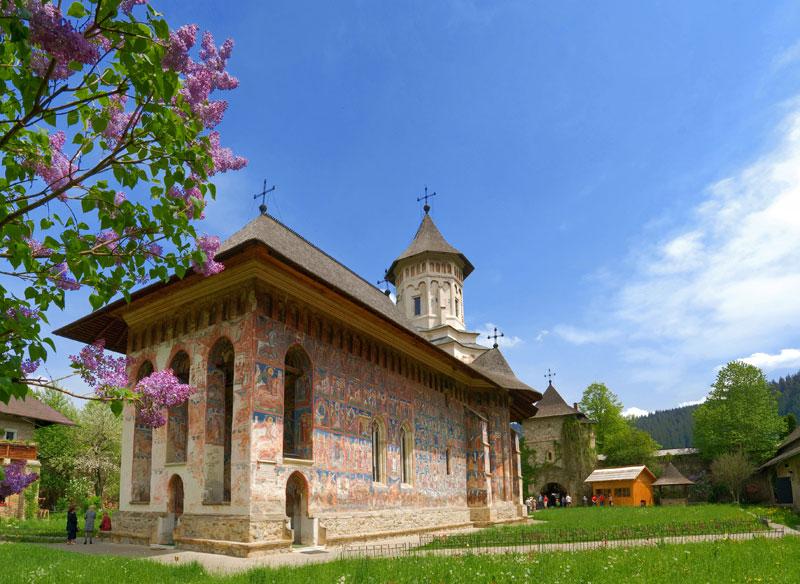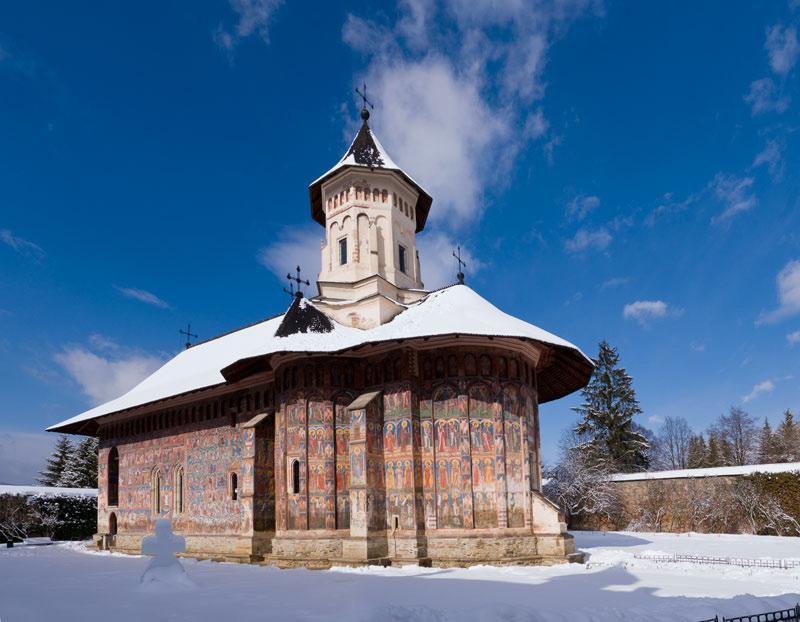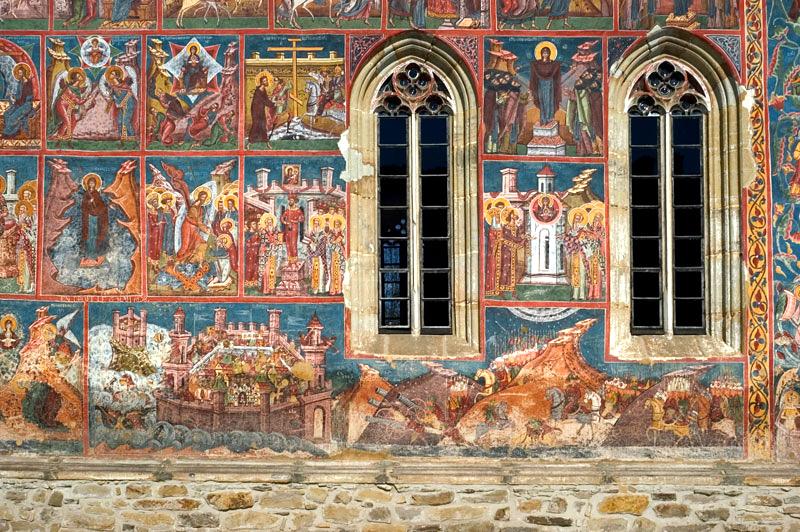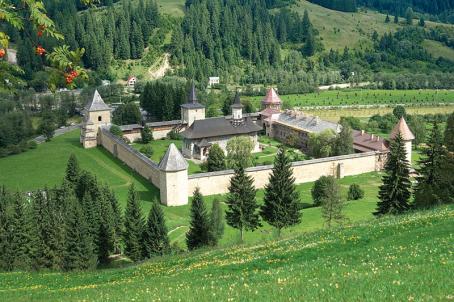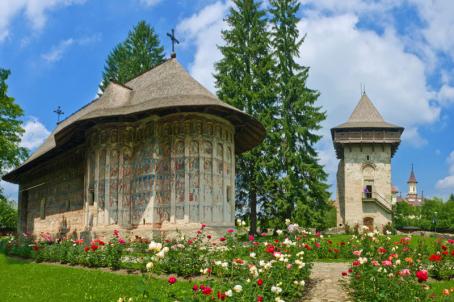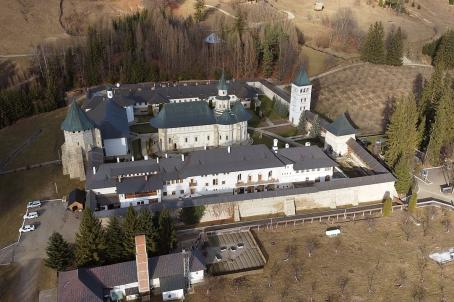Moldovita Monastery
The Moldovita Monastery was founded by Petru Rares in 1532 and it was consacrated to the Annunciation celebration. Some of the exterior frescoes, like Jesse's Tree, the Assault of Constantinople and the Prayer Hymn of the Annunciation, have a distinct esthetic and Christian spiritual value among the exterior mural painting.
